Kitchen blind ideas – 10 styles for practical kitchen window coverings
From pretty Roman shades to contemporary roller designs, these kitchen blind ideas prove just how chic functional can be

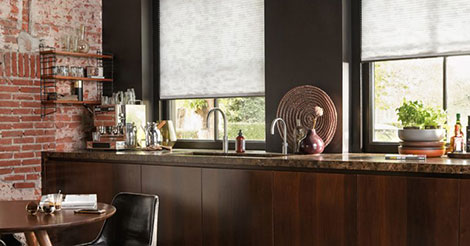
Kitchen blind ideas may not sound like the most glamourous of kitchen additions admittedly, but window coverings can make such a difference in a space, and we think they deserve more attention. Kitchen blinds help bring in a lot of movement, color, and print into the room.
Blinds also help control the light streaming in, ensuring the room is either well-lit or dim and moody. In a sense, kitchen blinds heavily affect the quality of the environment inside. This is why it's essential to turn your focus on this very important element in the kitchen. If you're unsure about which drape to choose, we have you covered. Here are all our favorite kitchen ideas and blind styles that prove dressing your windows can really complete a space.
1. Choose the right blind material
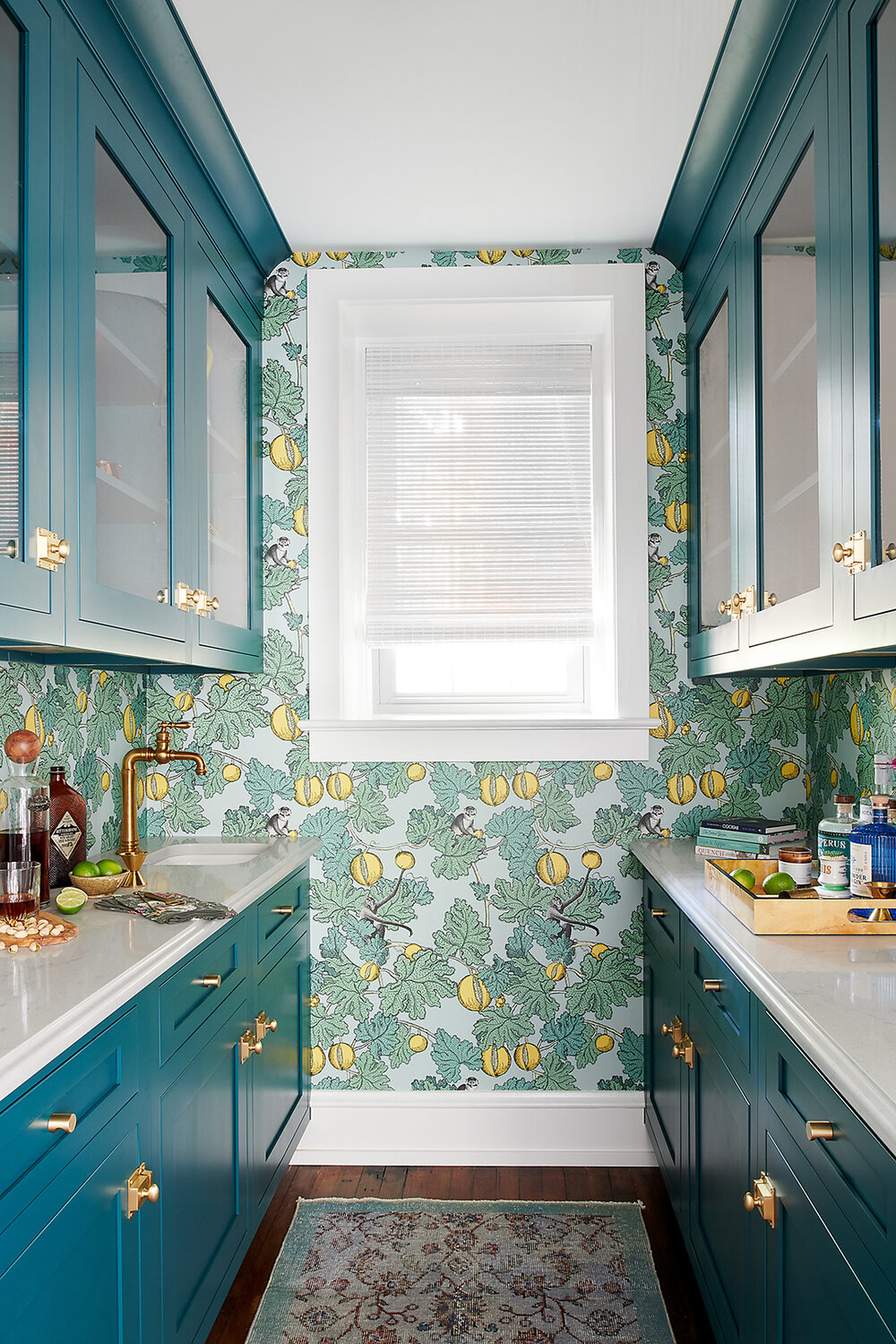
The first point to keep in mind was choosing a kitchen blind is the usage of your kitchen – do you cook here every day? And what kind of cooking do you undertake? The kitchen usually deals with extreme environments; steam, heat, and fumes are regular features. If you cook often, chances are the fabrics around will absorb all the smells and fumes and start wearing and tearing soon. This is why you're better off choosing a non-fabric, waterproof blind material that is easy to clean and that can stay up for long periods.
Constant splashes of water too can ruin some blind styles, including real wooden blinds, as these have tiny pores that trap water. In that case, faux wood, acrylic or aluminium blinds work fine.
If you don't indulge in a lot of heavy-duty cooking or usually whip up dry meals, then the larger world of kitchen blinds is open to you. Choose cotton, sheer, chenille, or polyester fabrics to bring colors or interesting patterns. You could also choose wood, plastic, or canvas blinds, as per your budget and convenience.
If you're a busy bee who doesn't have a lot of time to indulge in the household upkeep, you'll want to choose a fabric that can be easily unhooked from the railing and put in the washing machine. This will however also mean that you need to stay away from super plush fabrics and textiles like taffeta, velvet, and faux silks; unless you have the time to take them to the dry cleaners now and then.
Wooden, bamboo, and aluminum shades look great as kitchen wall decor items too and can be cleaned with a damp cloth, and vacuuming them every once in a while will also work. If you want to ensure your kitchen blinds does not reek of kitchen smoke and smell, you could consider investing in an extractor fan.
The Livingetc newsletters are your inside source for what’s shaping interiors now - and what’s next. Discover trend forecasts, smart style ideas, and curated shopping inspiration that brings design to life. Subscribe today and stay ahead of the curve.
2. And pick the perfect length

You must also carefully consider the window length, width, and depth. This will help you determine the size of slats or fabrics. Ideally, deeper windows look best with the wide blind slat sizes, and small, shallow windows work better with the narrow slats.
Generally, the slat widths are 1/2 inch, 1 inch, or 2 inches. For a medium-sized window, the common 2-inch slats are good. A large window can handle a 2 1/2-inch slat. For fabric blinds, take three precise window measurements for the width: the top, middle, and bottom of the window. Then find the height by measuring the inside top of the frame to the left, center, and right. Ideally, keep the fabric blind along the exact same length of the window.
3. Add pattern with a Roman blind

For a highly practical space, choose roman blinds as these can be operated with ease. These are usually installed outside of the window recess and can be easily wiped and cleaned. They're available in a huge range of colors to suit any kitchen style, and with these blinds, you can adjust light and air, and even frame and emphasize the style of the window.
These blinds are great for lifting and lightening the look of a room and are ideal for smaller windows. These also look great when paired with vibrant kitchen wallpapers. Consider fabrics with small stripes or subtle patterns that add a point of interest to the room. This is particularly true with muted tones and pinstripes. Light-weight fabrics like faux silk and taffeta, and medium-weight fabrics like cotton and linen can give crisp and sharp folds to the drapes.
4. Use kitchen blinds to add a splash of color

Blinds provide you with the opportunity to change the overall kitchen color scheme. If you have a monotone kitchen (like pictured above), maybe choose a pop-colored blind to add some zing to the interior. Large prints too work well – think geometrics, and stripes. If you still can't make up your mind, fabric blind swatches can help you out, and help you visualize how the color balance will look in the room.
If your kitchen already has some sprinkling of color then you can match the blinds with one or two hues already present in the room, like a cool black kitchen cabinet or a grey countertop. Mixing a third color may help create a color block look; although you want to try doing that in a slightly larger kitchen. In a small one, the mix of colors may look too haphazard.
When it comes to creative ideas, a custom valence can be an interesting addition. 'A custom valance can add so much personality to a compact space. The zippy stripes add a fun pop of color and pattern. The shade can be lowered as needed, to block the glaring sun. Most importantly, it is a lovely little detail. A little color and pattern can go a long way,' Mary Maloney, Bee's Knees Interior Design says.
5. Choose roller blinds for a practical space
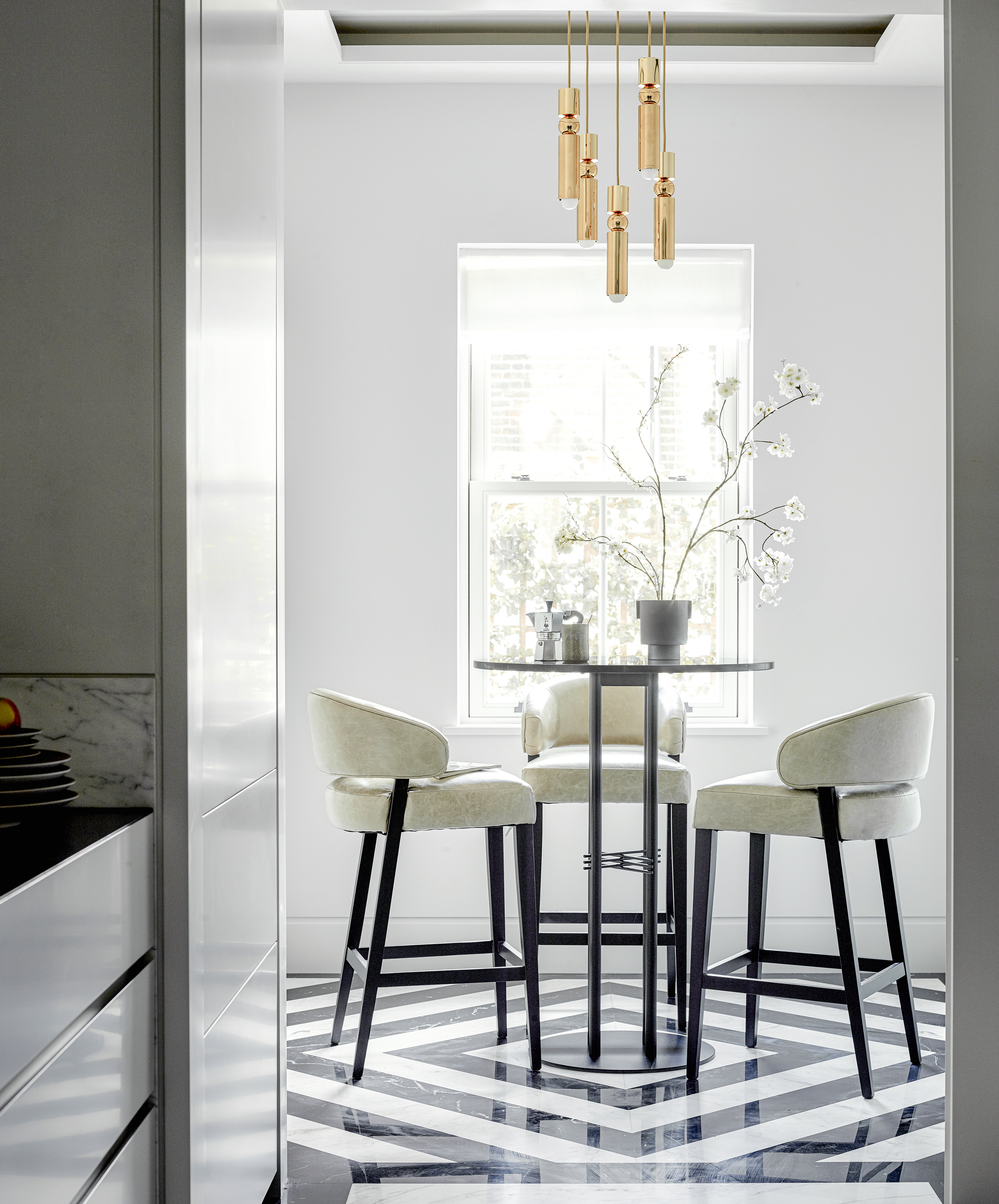
For a smart and discreet window blind option, roller blinds are ideal. The simple pull-up, pull-down mechanism allows you to adjust the light coming through the window. If you like a bit of filtered light coming in, choose sheer or cotton fabrics for your roller blinds.
Blackout with dark-toned linens and canvas can be used if you want complete privacy or want to entirely cut out the sunlight when you pull down the drapes. Roller blinds also offer space for innovative curtain ideas as they can be installed on the same window as the blinds, giving you the lighting options you desire that particular day.
6. Moderate the sunlight with shutters

Also known as plantation shutters, these are the type of blinds that are adjusted within the frame of the window. They act like mini doors, that allow you to open inward or outward from the window. You can even adjust the individual slats as per your convenience and according to the light you require.
Indoor shutters is a style usually seen in cafes and can give your kitchen a whimsical feel. Ideally, white is a preferred color for shutters though no rule says you can't paint them in bolder shades. If you undertake serious cooking in the kitchen with boiling pots and bubbling curries, these blinds allow you to air out the room completely – you just need to swing the windows open.
7. Opt for woven drapes for a rustic touch
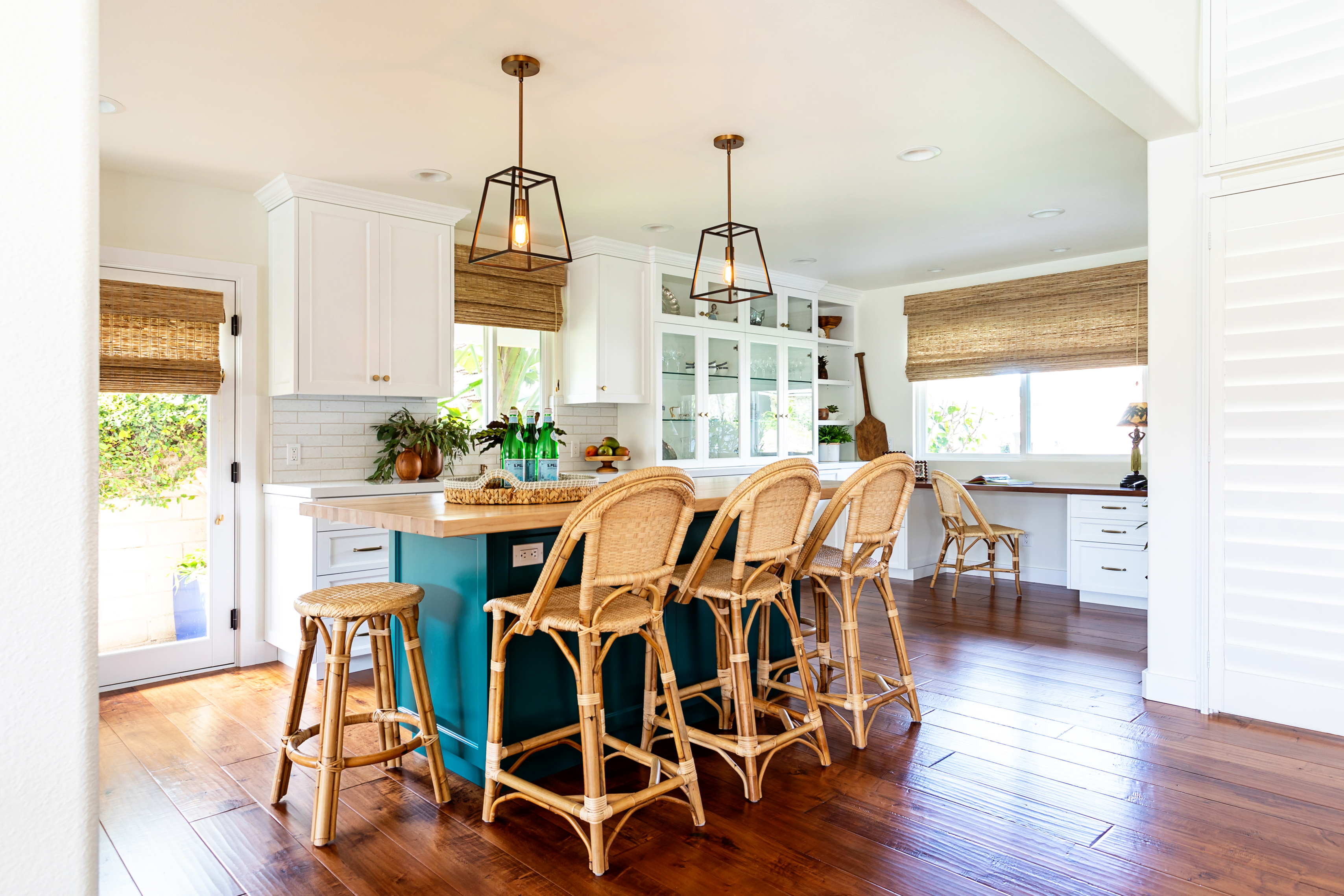
Woven straw, wood, or linen blinds are superb for when you want a constant, soft glow in the kitchen. These blinds look fabulous in dreamy, earthy spaces that feature exposed brick walls, terracotta tiles, or rough granite kitchen countertops.
This material can be installed over a roman blind for ease of use. They help add texture to a space and give the kitchen the dainty touch it deserves.
8. Join the green movement with eco-friendly drapes
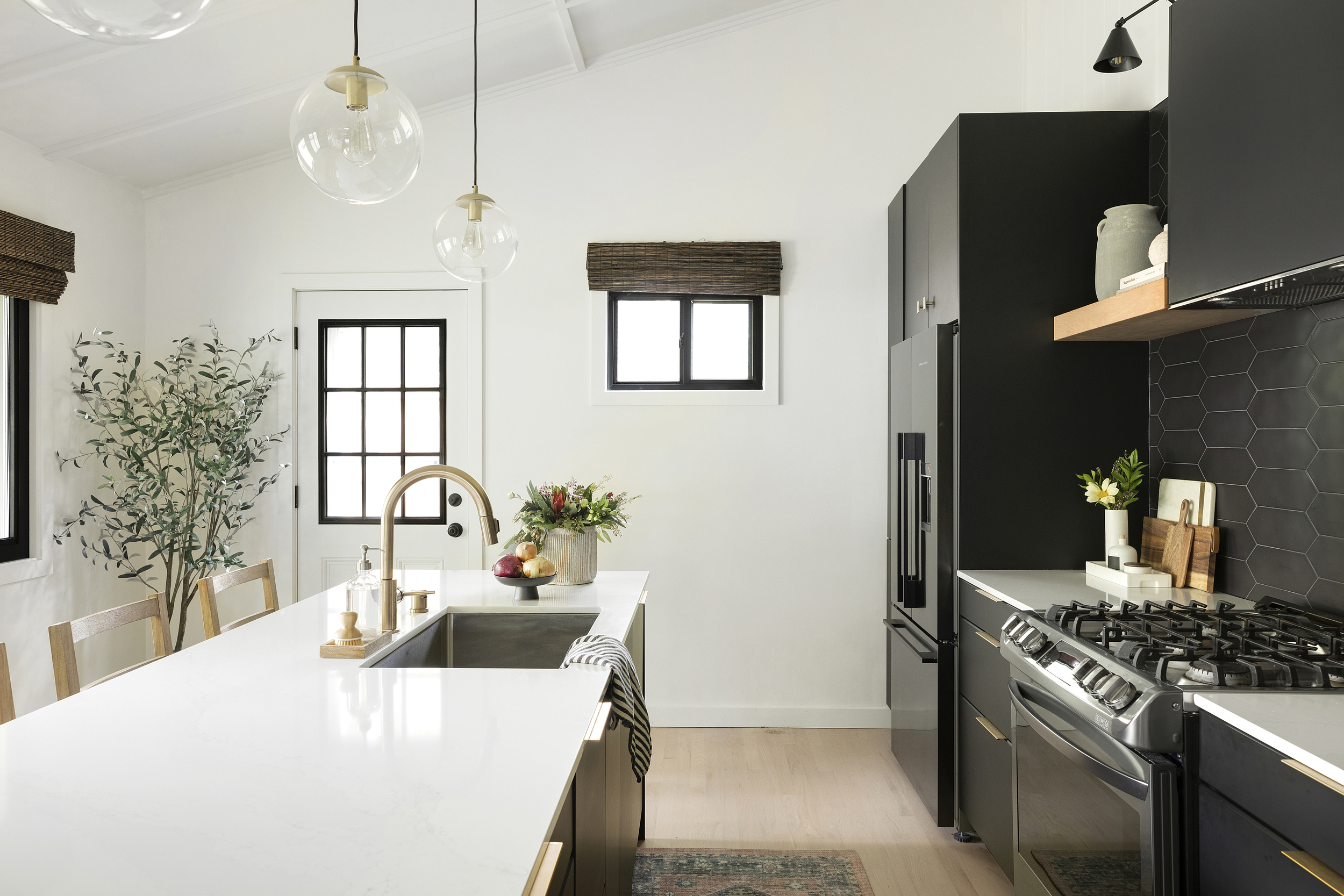
Innovative solutions are constantly cropping up in the design world, especially when it comes to sustainable living and green ideas. From blinds made from recovered shoreline plastic, fabric waste to even the solar-powered varieties, there are tons of sustainable materials to choose from.
'Bamboo, reeds, jute, real wood that are sustainably harvested out or natural environments make great eco-friendly blinds. In addition, faux wood blinds made from recycled materials are a great option,' Jamie King of JLK Interiors says.
9. Keep it hi-tech with smart drapes

Technology has entered almost every aspect of our lives and while we all have heard of smart kitchens, blinds aren't left behind. Smart blinds, although look like ordinary ones, can perform several functions. In addition to blocking out light, they can prevent the loss of heat, block UV rays and even offer privacy from the outside; all with the push of a button. Some varieties also allow you to adjust the temperature inside.
'I love the Hunter Douglas blinds. These stunning blinds stack up in one corner, giving the entire window a picture-perfect and clean look. From sheer to blackout, these can change with just a slide. The blinds are energy-efficient, diffuse harsh sunlight, and can even insulate a space. I also love that when the blind is not in use, the blinds stack up in one corner, barely visible. I like it neat, clean, and discreet,' avers architect Karan Desai.
10. Bring in plants for a fresh indoor scenery
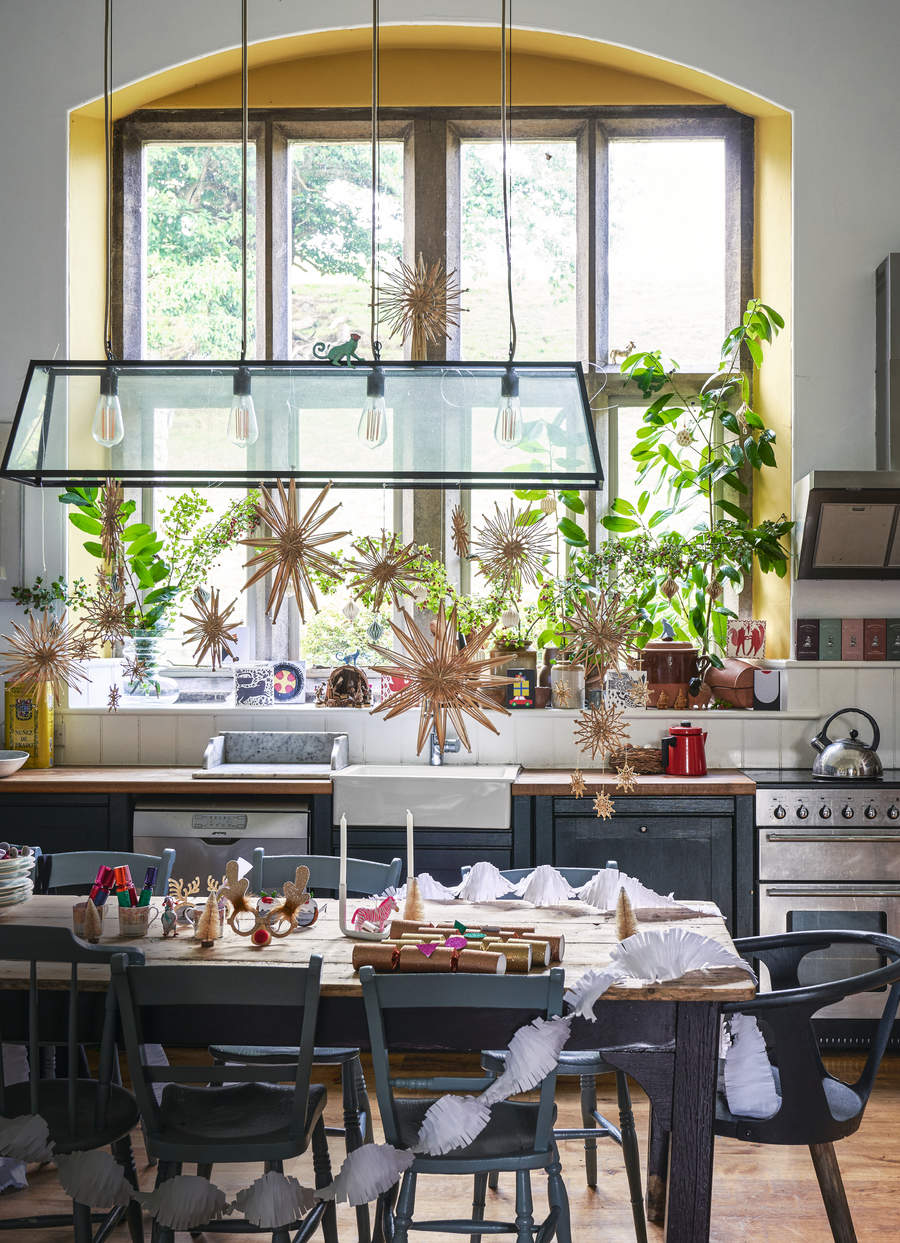
While a rather unconventional idea, using plants as 'blinds' or coverings for your windows is a remarkably fresh approach to bring the outdoors in. And, you're doing your plants a big favor by placing them next to the sun at all times! Choose plants in varying heights and pot them in vibrant vases. Place these along with the window, such that the tall plants block out any prying eyes from the outside, and together with the tiny varieties, they make up a mini garden, always at your disposal.
You could even consider growing herbs and microgreens in these pots so they're available all the time for your brand new recipes - now you're ready for your own cooking show!
Of course, if maintaining plants isn't your thing, you could consider artificial indoor plants.
What type of blinds are best for kitchens?
The world of kitchen blinds is huge, varied and vibrant. In small kitchens with compact windows, roman or roller blinds would work, that can be installed conveniently and are easy to operate. Choose PVC or flame-retardant fabrics to avoid any kitchen accidents. If you're choosing fabrics, ideally select those that can be washed easily and reinstalled back on the window channels.
Apart from Roman blinds (with horizontal slats), there are also vertical blinds that offer different kind of privacy and light functions. It is also easy to replace a vertical slat in case one gets damaged. If you have a large kitchen and you undertake heavy-duty cooking, perhaps shutters would work the best. These will also give your kitchen a more design-savvy look.
Should blinds be lighter or darker than your walls?
Either is fine, as long as you're able to create a good balance in the room. Use the blinds to create a lovely contrast in the room – so if you have a muted kitchen, then dark, deep-toned blinds will look fantastic. Similarly, in a dark kitchen, white, off-white, or gray blinds will keep things interesting. You can also consider doing a color-on-color layering scheme where you choose the same toned blinds as the walls, however, remember to choose the color of the blinds, a shade lighter than the walls.
Just remember, the right blinds can turn an ordinary room into an instantly cover-worthy one. So give this important element a good, long thought.

Aditi Sharma Maheshwari started her career at The Address (The Times of India), a tabloid on interiors and art. She wrote profiles of Indian artists, designers, and architects, and covered inspiring houses and commercial properties. After four years, she moved to ELLE DECOR as a senior features writer, where she contributed to the magazine and website, and also worked alongside the events team on India Design ID — the brand’s 10-day, annual design show. She wrote across topics: from designer interviews, and house tours, to new product launches, shopping pages, and reviews. After three years, she was hired as the senior editor at Houzz. The website content focused on practical advice on decorating the home and making design feel more approachable. She created fresh series on budget buys, design hacks, and DIYs, all backed with expert advice. Equipped with sizable knowledge of the industry and with a good network, she moved to Architectural Digest (Conde Nast) as the digital editor. The publication's focus was on high-end design, and her content highlighted A-listers, starchitects, and high-concept products, all customized for an audience that loves and invests in luxury. After a two-year stint, she moved to the UK and was hired at Livingetc as a design editor. She now freelances for a variety of interiors publications.